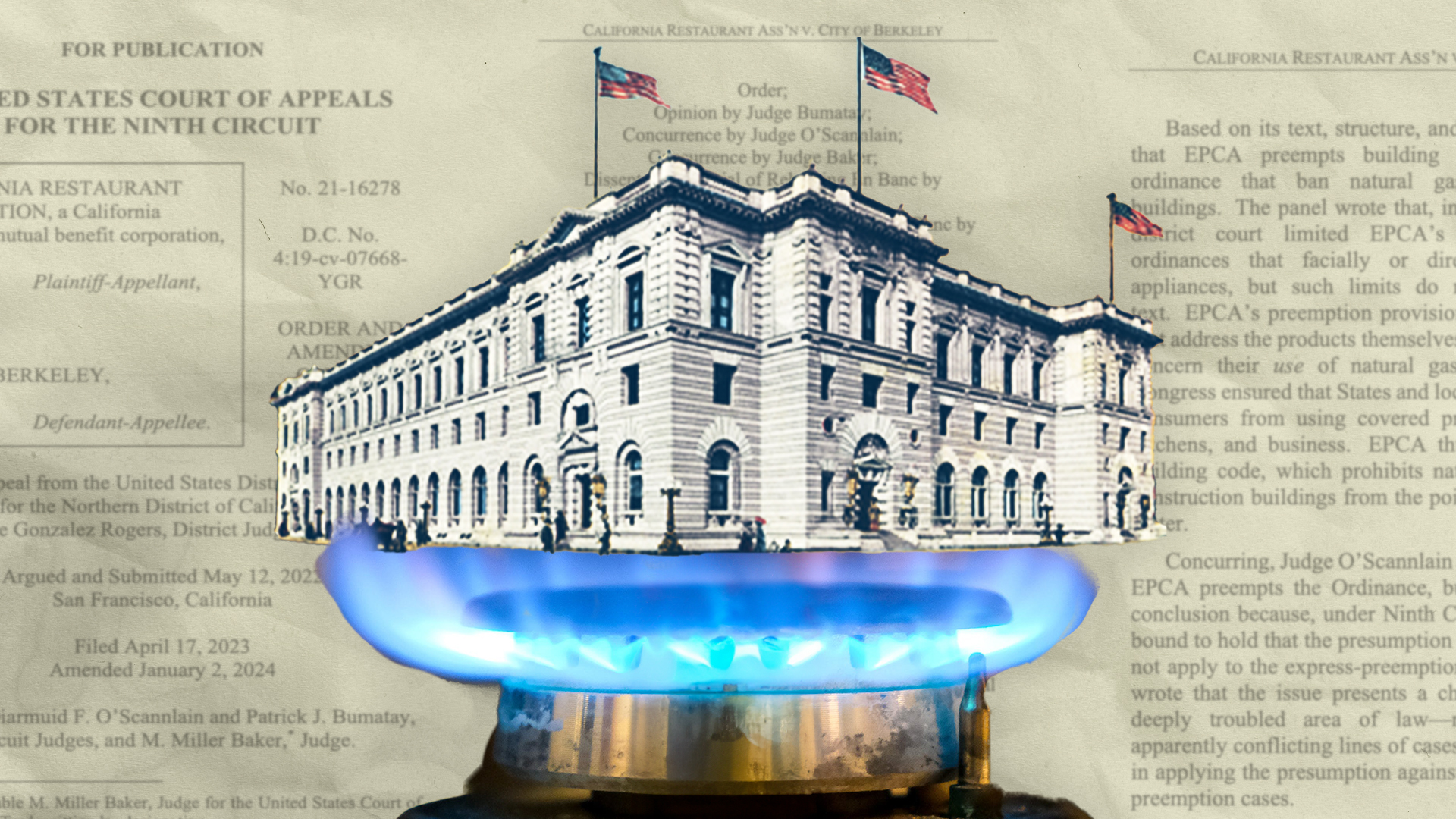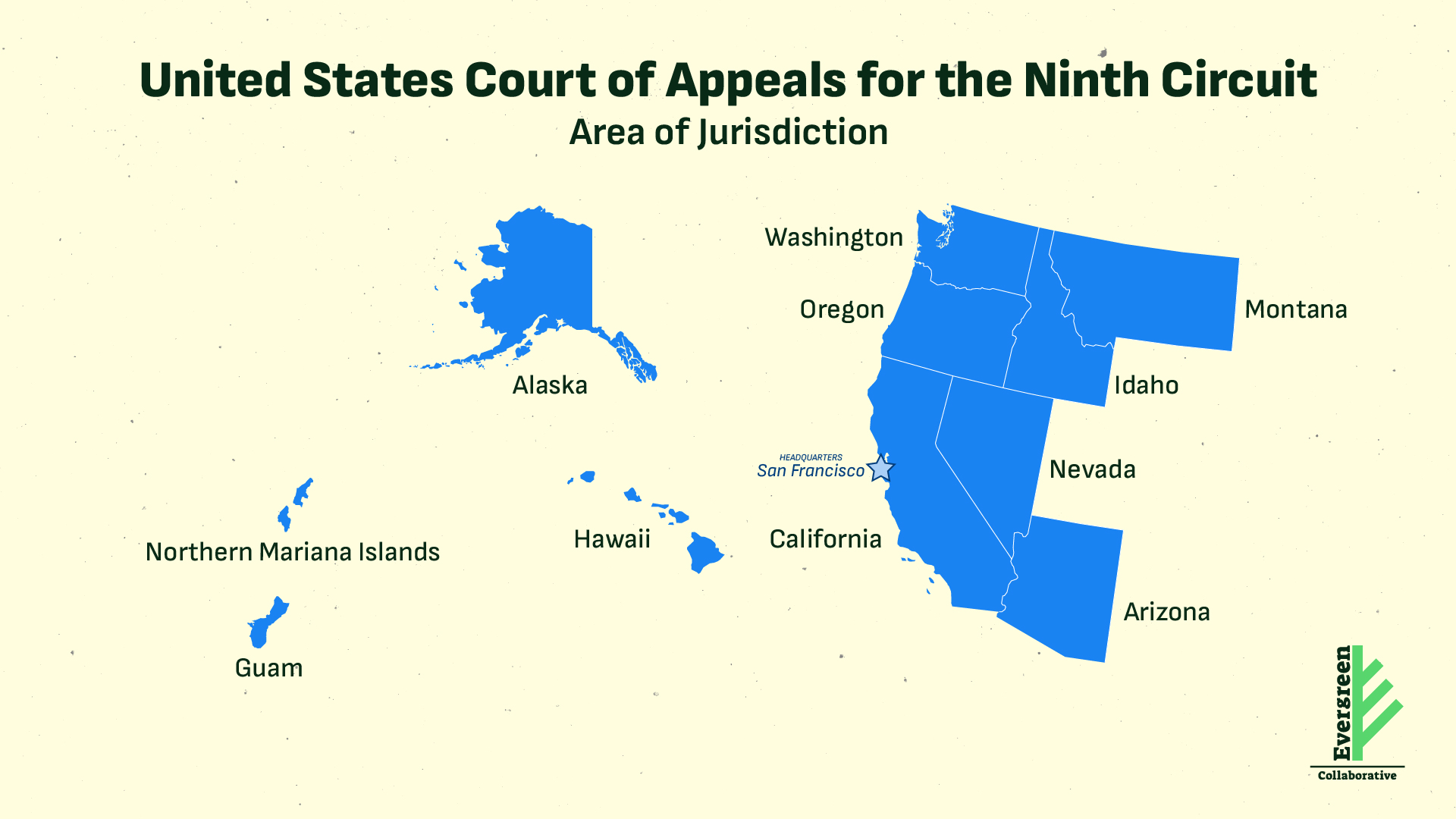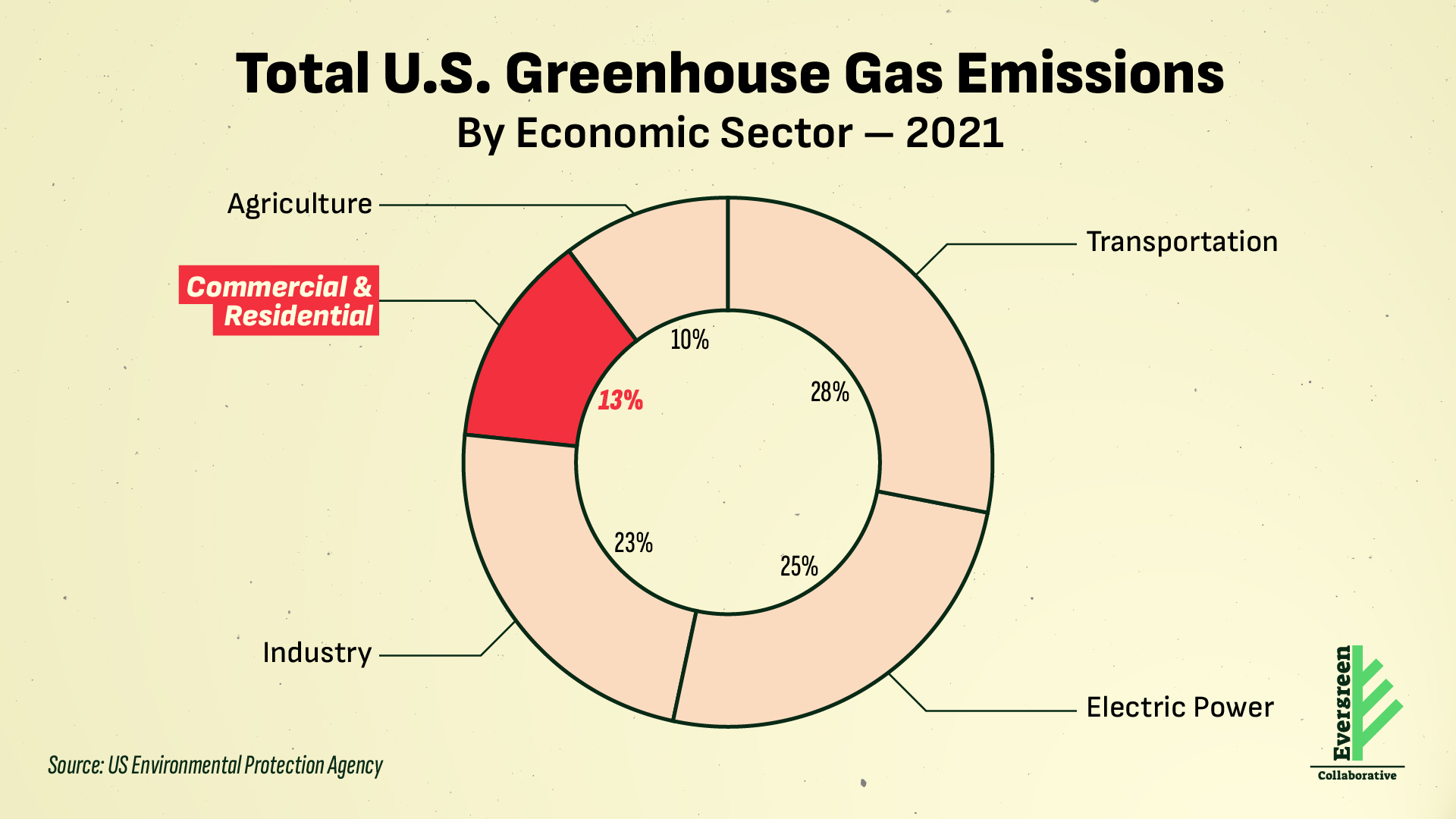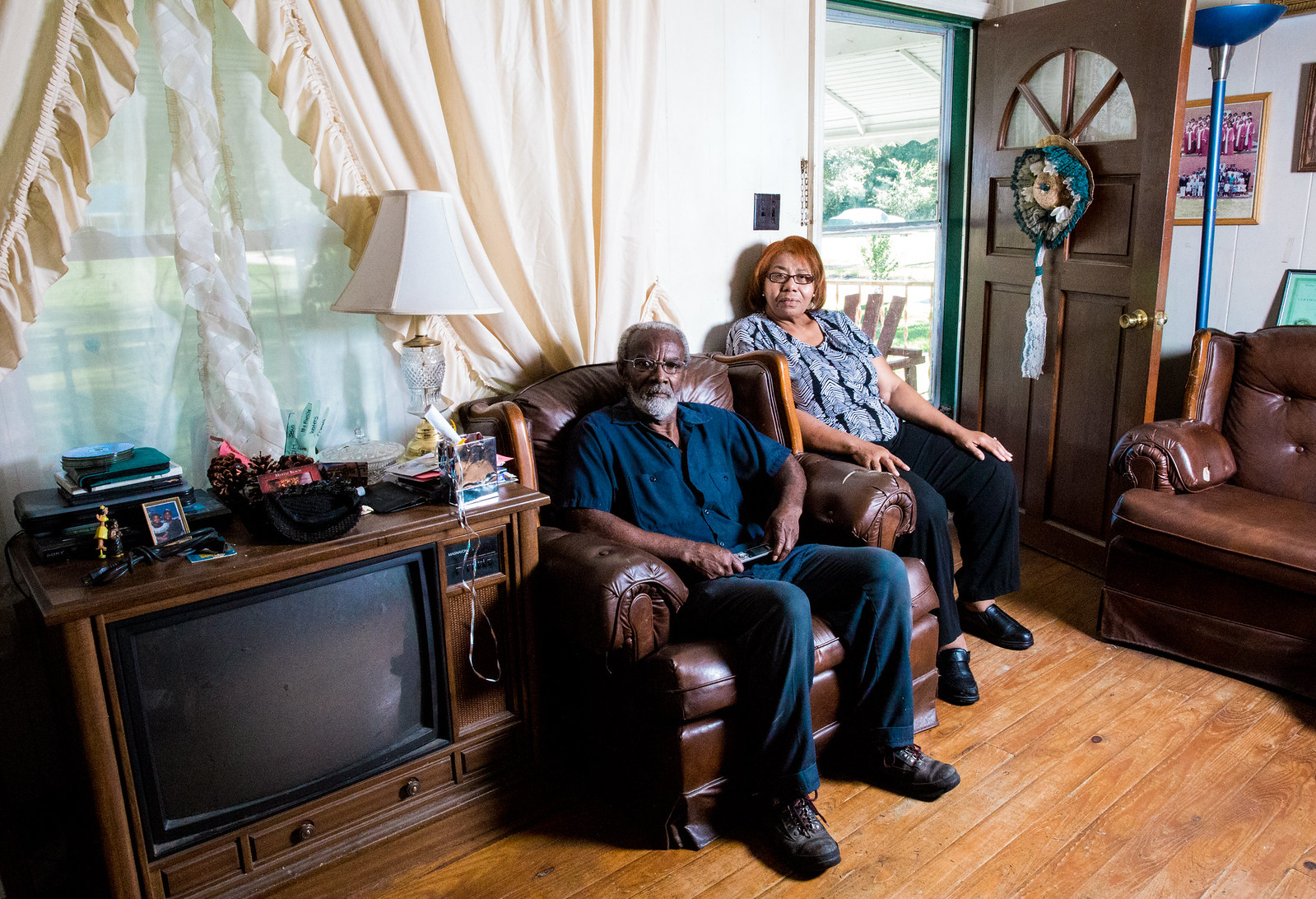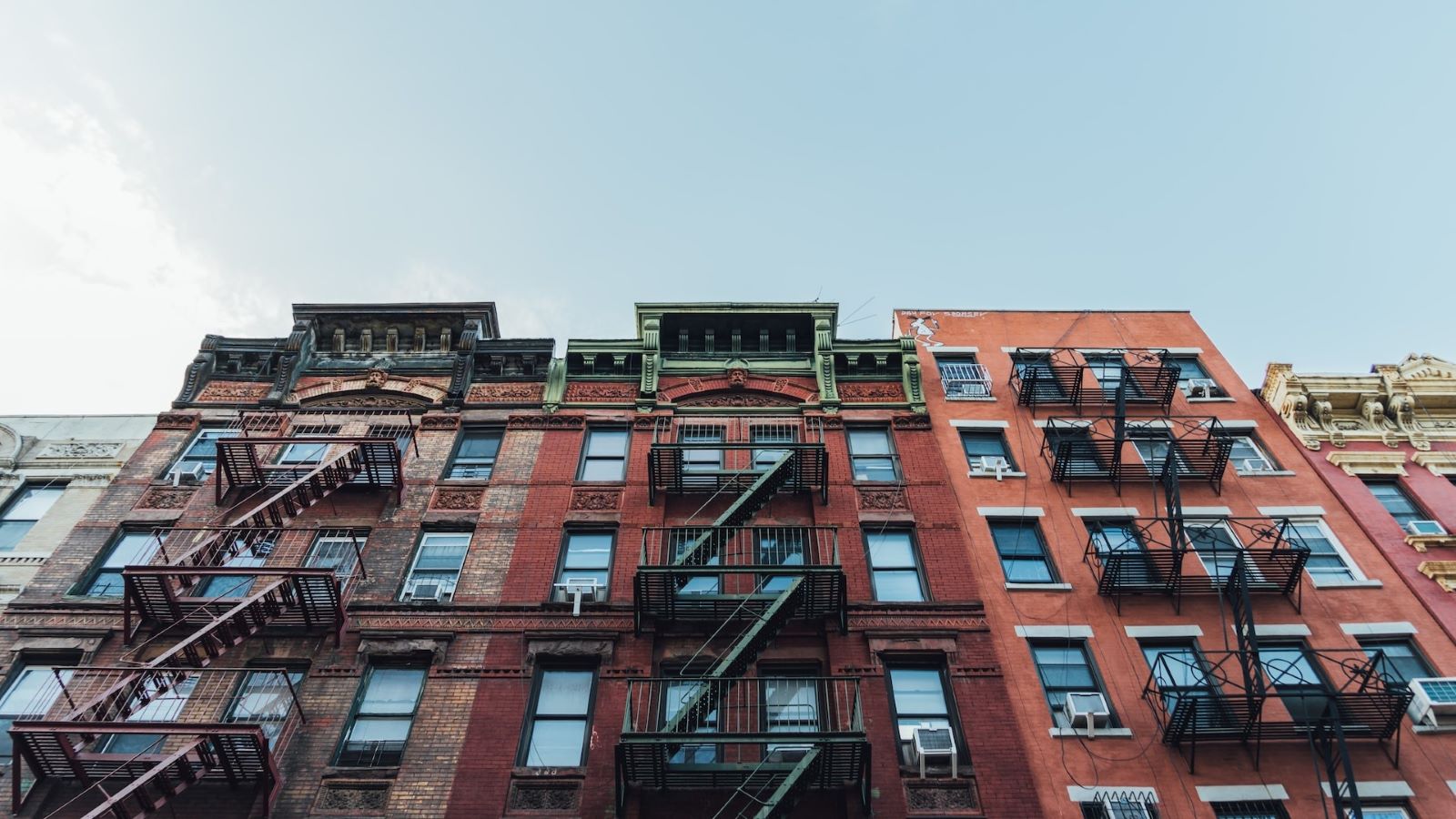So, Where to from Here?
Several cities have followed in Berkeley’s footsteps, and many more want to. But given this legal saga, there’s some uncertainty around what options remain open for state and local governments to push building decarbonization policies. Fortunately, there are still many lawful avenues for advocates to pursue.
First, it’s important to remember that the court’s decision only applies to some building codes for newly constructed buildings in the 9th Circuit. And while the 9th Circuit covers a large and influential portion of the U.S., many local governments, including those in California, are choosing to fight back. Though some cities in California have retracted their gas bans to avoid potential legal risks, other major cities like Los Angeles and San Francisco have thus far kept their bans in place. Ultimately, it’s up to individual local governments, their budget, and their appetite for legal risk on whether or not they feel comfortable pushing forward a Berkeley-style gas ban.
6 Ways States and Local Governments Can Take Action to Cut Climate Pollution from Buildings
Beyond the limitations set by the 9th Circuit, states and local governments within their jurisdiction can still pursue these six options to electrify buildings:
1. Emission-based appliance standards through State Implementation Plans (SIPs)
Remember the EPCA preemption concern raised in the 9th Circuit case? Well, that only applies to regulating energy efficiency and use. But emission standards are notably not building codes subject to EPCA, and the Clean Air Act (CAA) and local air codes have supported appliance pollution standards for years. It’s time to deploy that approach, and lots of legal room remains. By replacing fossil fuel appliances with zero-emission electric alternatives, state regulators can dramatically cut building pollution, improve public health, and increase resilience to extreme weather. In fact, this is the pathway that New York City took to building electrification by prohibiting newly constructed buildings from combusting any substance that exceeds a threshold of carbon pollution.
Second, and crucially, emission standards are required by the CAA to be “harmonized” with EPCA, rather than preempted by it. In this way, states not only have the option to regulate air pollution by setting strong emission-based standards, they are actually obligated to. The CAA requires states to come up with “State Implementation Plans” (SIPs) to comply with federal air pollution limits. The Environmental Protection Agency (EPA) reviews individual SIPs and then chooses to approve or disapprove them. Once they are approved, they effectively become—and have the force of—federal law.
Federal EPA, including its regional offices that administer SIPs, needs to step up and start approving zero-emission standards into SIPs. And it can start with a zero-emission standard in the Bay Area, which will show industry that the path to zero, including in the 9th Circuit, remains open.
2. Building performance standards (BPS)
Building performance standards are a relatively new policy tool to address pollution in existing buildings. In major cities like New York City and Washington, D.C. older buildings can cover up to 70 percent of the area’s carbon pollution. While not all residential buildings are covered by a BPS, those that are are required to reach specific energy performance targets, and set a predefined time frame to reduce or eliminate carbon pollution.
3. Indoor air quality standards
Despite overwhelming evidence of the negative effects of fossil fuel appliances on environmental and public health, indoor air quality is essentially unregulated at the federal level. While the emission-based appliance standards discussed above primarily concern outdoor air pollution, there are also opportunities for states to advance building decarbonization policies by establishing indoor air quality standards. An indoor air quality standard could be a powerful tool for addressing the health impacts of fossil fuel combustion from appliances in existing buildings by setting limits on indoor air pollution and specifying pathways for compliance with those limits. This standard-setting process could mimic existing ones at the federal level, like the process EPA adheres to for its outdoor air quality standards.
4. Appliance labeling to increase customer awareness of the harms of appliances
In early February, a new bill (AB-2513) was introduced in the California State Assembly, which would prohibit the sale of gas stoves, unless the stove is labeled with a statement outlining the health risks and air pollutant emissions (for nitrogen oxides and carbon monoxide) associated with gas stove use, beginning in January 2025. This action was taken in response to a growing body of research that highlighted the negative health impacts of gas stove use. Unlike the previous options, this policy targets consumer awareness as a key lever to advance building decarbonization, as the health risks of gas stove use become more widely accepted.
5. Utility Policy to Electrify Buildings
There’s also much to do to align utility behavior and rates with the path forward. Not only can states bar corrupt utility lobbying practices with our ratepayer money, but they can also move forward with the full suite of tools states and utility commissions have long used to design the power grid and gas transmission system. Ultimately, states clearly have the power to decide whether gas pipelines get extended, how to drive job growth by building out power grids instead, and how to fund the removal of old, costly, and dirty gas infrastructure. It should be full speed ahead to design the system for zero emissions and bring the utilities in line.
6. Deploy IRA Funds to Move Progress Forward and Bring Companies on Board
Appliance manufacturers have already committed to partner with states to move electrification forward, and the Inflation Reduction Act offers states and local governments millions in funding to electrify buildings in an equity-forward way. This is the right time for state and federal funders to move those funds as ambitiously as possible and to seek clear commitments from manufacturers, builders, landlords, and local governments to electrify buildings regardless of Trump-judge-created legal churn. It’s time to make progress on the ground.
The fact of the matter is that despite this latest ruling, building cleaner, safer homes, schools, and workplaces is still possible. And it’s on local and state governments to seize the opportunity and get it done. For a deeper dive into building decarbonization and opportunities to slash indoor air pollution by using existing regulatory authorities, new funding opportunities, and cross-cutting program guidance, check out our latest buildings policy memo.
